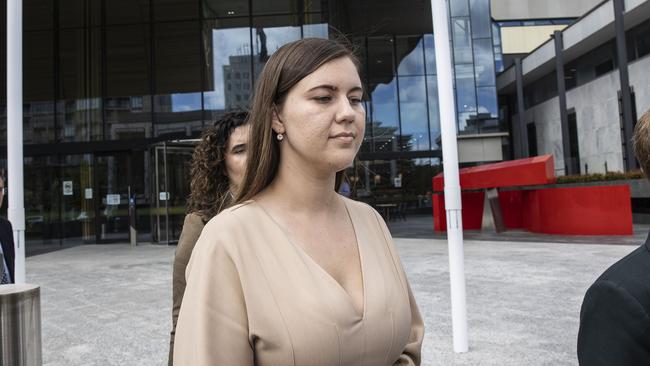ACT to amend law ahead of Lehrmann retrial
The ACT government is rushing to amend the Evidence Act ahead of Bruce Lehrmann's retrial.

The ACT government is rushing to amend the Evidence Act ahead of Bruce Lehrmann's retrial.
The ACT government is rushing to amend the Evidence Act – seemingly without proper explanation or consultation – in a move suspected to be aimed at making it easier to retry Bruce Lehrmann over the alleged rape of Brittany Higgins in February.
ACT Attorney-General Shane Rattenbury’s proposed legal change – being rushed through the ACT parliament – will make it easier for Director of Public Prosecutions Shane Drumgold to prosecute his case against Mr Lehrmann after the accused’s first trial was aborted in October.

The change of legislation – expected to be introduced later this month – would mean that testimony given by a complainant in court can be recorded and deemed admissible in a retrial.
A spokesperson said the ACT government was considering amendments to the Evidence (Miscellaneous Provisions) Act 1991, after the Director of Public Prosecutions raised this procedural omission which had arisen in four matters.
“This proposal reflects the ACT government’s long-standing commitment to reduce barriers to providing evidence in court proceedings, while maintaining fairness for an accused person,” they said.
“A draft bill has been distributed to stakeholders for comment, including the lawyers for any parties this law change could affect.
“If the bill proceeds, we expect it would be debated in the 2023 parliamentary sittings, to allow for the usual time taken for a committee to consider proposed legislation.”
Legal sources believe this abrupt law change is intended to assist the DPP in Mr Lehrmann’s retrial because it would excuse Ms Higgins from giving evidence again when the matter returns to the ACT Supreme Court next year.
Ms Higgins’ previous evidence – delivered in person in October – could be used again which would free her from attending court or facing another cross-examination by Mr Lehrmann’s defence team.

During Mr Lehrmann’s first trial Ms Higgins opted to deliver most of her evidence-in-chief in person in the courtroom rather than from a remote witness room by audiovisual link.
The 27-year-old only utilised the remote witness room during the first part of her evidence in which her police record of interview was played to the jury.
At present, a witness’s evidence given by audiovisual link must be recorded and would be admissible in a related proceeding, unless the court in that later proceeding decides otherwise, but evidence given in the courtroom is not recorded or admissible in a retrial.
If the proposed changes to legislation are passed, Ms Higgins’s in-court evidence will be admissible during Mr Lehrmann’s retrial.
When Mr Lehrmann’s first trial was aborted – due to juror misconduct – on October 27, Ms Higgins delivered an emotional speech outside the Supreme Court building in which she did not indicate whether she was willing to testify again during the February retrial.
The Australian has contacted Mr Lehrmann’s defence Barrister Steven Whybrow SC for comment.


